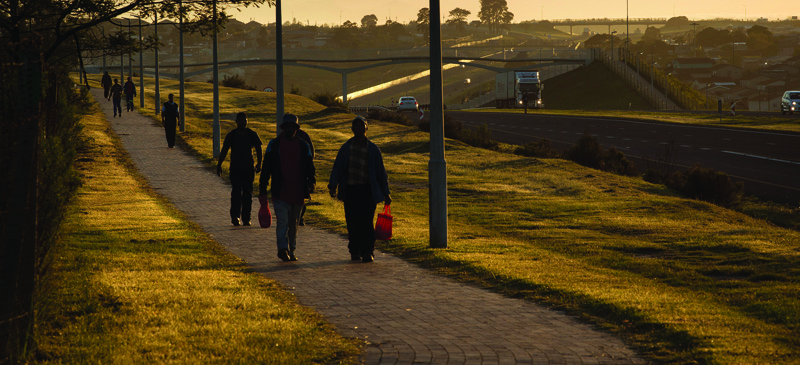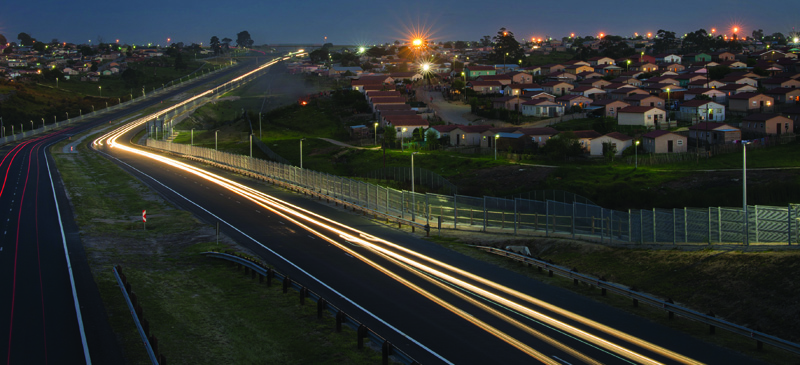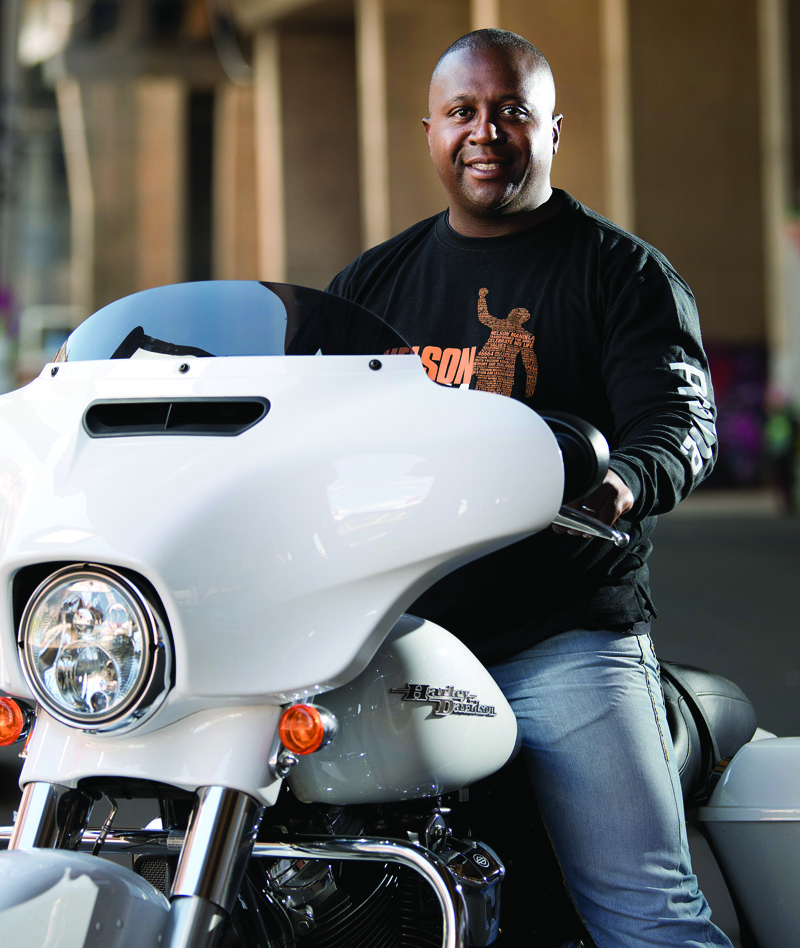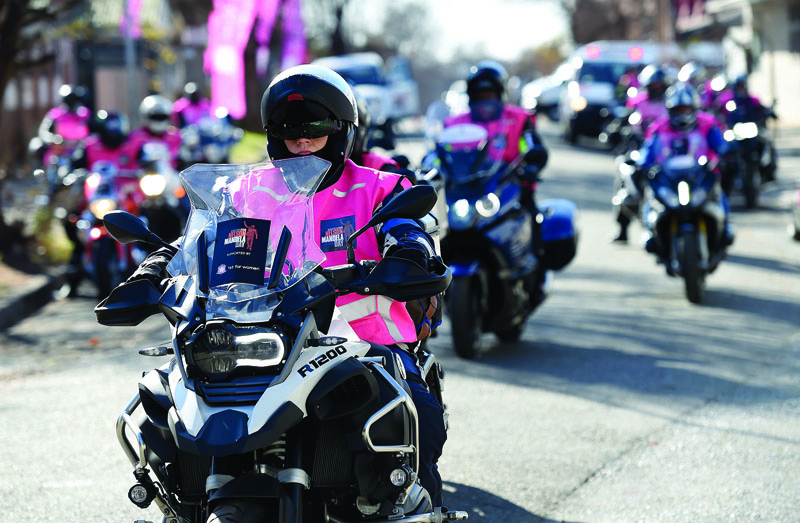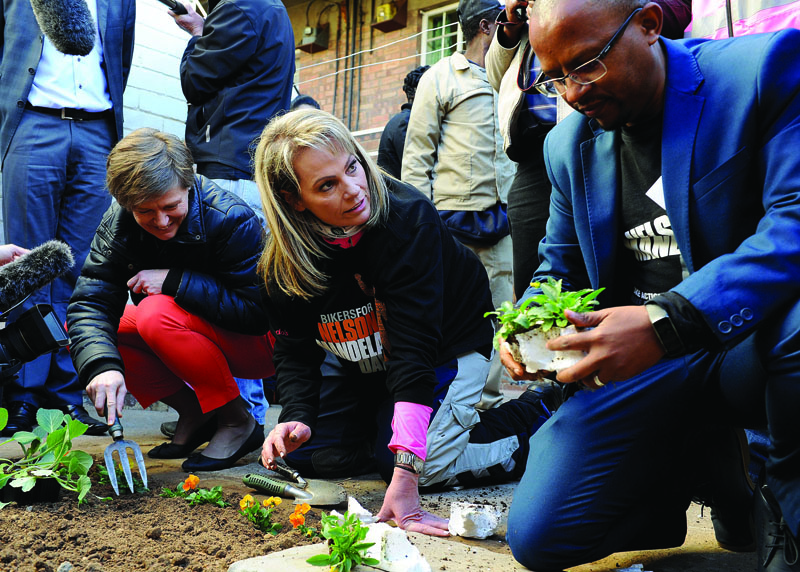April-May
Edition
Table of Contents
- KING IV matters to us 04
- Intersection 05
- Learn the Lingo 06
- Many threads, one story 07
- Top class teachers 09
- Feet get their own lanes 10
- Planning your new wheels ? 11
- Books for the long road 12
- How bikers support Mandela Day 13
- Taming the beast 14
- Forewarned is forearmed 16
- Just a spoonfull... 18
- We invite you to explore 19
- Stellenbosch Smart Mobility Lab 20
- Education by the numbers 21
- As part of the RAF's Post-Crash care 23
- The road to fame 24
Message From The CEO
His closest friend and comrade referred to Oliver Reginald Tambo as someone who "embodied love; an idea; a hope; an aspiration; a vision". A century after the birth of this remarkable and prescient leader, all South Africans - even those who were born after his passing in 1993 - now have opportunities to reflect on and agree with the sentiments expressed by Nelson Rolihlahla Mandela when he spoke at OR Tambo’s funeral. Indeed, a free and democratic South Africa would not have been realised without the selfless contributions made by OR Tambo and his generation of struggle activists. None of the gains we have made over the past 22 years would have been possible if we were not able to build on his vision and legacy. "Among the many ways in which OR Tambo’s legacy lives on today is in the infrastructure named in his honour." Born in the village of Kantilla in the Eastern Cape, Tambo struck up a lifelong friendship with Nelson Mandela while studying at the University of Fort Hare.
Together with other comrades from the Eastern Cape, including Walter Sisulu, they established the ANC Youth League and then moved into the leadership of Africa’s oldest liberation movement. After the Sharpeville Massacre, Tambo and his family went into exile to lead the ANC and mobilise international support for the struggle against apartheid. He returned to South Africa, but passed away in 1993, exactly a year before his dream of a united, non-racial democracy was realised. Among the many ways in which OR Tambo’s legacy lives on today is in the infrastructure named in his honour. Many visitors enter our country through the arrivals hall at OR Tambo International, an airport served by the Gauteng freeway network, managed by SANRAL. The government has just given the green light for the construction of a magnificent new freeway - the N2 Wild Coast Road - that will bring investment, jobs and economic opportunity to the part of the country in which he grew up and now carries the name of OR Tambo.
Biblio to audiophile
Between the morning commute, the evening rush hour, the gym and the commitments most of us have before bed, enjoying a good book is becoming a luxury. Modern-day life squeezes every ounce of time out of our lives - to the point that the pulp bestseller you heard about or the nonfiction book all your friends have recommended is relegated to "holiday reading". But why wait? There are myriad apps and services you can tap up to enjoy good literature - fiction and nonfiction - while you shuttle back and forth between home, school, the shops and the office. Why not enjoy a thriller or expand your horizons on the way to work? Here’s our list of the best audiobook apps out there...
- Audible :
The daddy of all audiobook apps, Amazon-owned Audible, has more than 150 000 titles on its service that users can Hello from the CEO buy, rent, stream, or if you’re prepared to buy an upper-tier service, download to your Apple, Android or Windows device. You’re not limited to listening on your smartphone or tablet, incidentally, so if you have a desktop that falls into any of the above categories, you can even surreptitiously listen to books at work. The service is free to start with, but if you find yourself sold on it, Audible costs $15 a month (about R200; watch out for that fluctuating rand/dollar exchange). That said, there’s no limit on the books you can stream as a member and it’s cheaper than buying the same number of books from local retailers. And many podcasts offer discounts to boot. - Downpour :
This audio bookstore/subscription service doesn’t have the muscle behind it that Audible does, but there are a few reasons it may be of interest. First off, it doesn’t launch a player. Titles can be downloaded in MP3 format and chaptered as M4b files. It can also stream these files across devices wherever users have the Downpour app installed (including tablets, desktops and smartphones). Its selection is smaller than that of some competitors, but it’s growing at a rapacious rate. And if your subscription lapses, while you may not be able to download more titles, you will keep any titles you’ve purchased. You know, kind of like you bought them in a shop. - Scribd :
While its selection is smaller than some - about 30 000 titles are currently available on the service - there are a couple of reasons to give Scribd a go. First off, its subscription service price is more affordable - $9 per month at present, which works out to about R120. Second, once you’ve signed up you can listen to any title, any time. Its search function is also one of the most intuitive, making it easier for customers to find books based on topics or genres they’re interested in, or popular works that are trending. It’s the best virtual library card you can buy.
KING IV matters to us
One of the hallmarks of our relatively young democracy has been its contribution to the discourse on corporate governance, now enshrined in what is commonly referred to as the King Report. In July 1993, the Institute of Directors in South Africa asked retired judge Mervyn King to chair a committee on corporate governance, whose report (King I) led to the first corporate governance code for South Africa. Since then, three more reports have been issued - King II (2002), King III (2009) and King IV (2016). While the first three reports generally applied to listed companies, King IV extends the good practices used to benchmark corporate South Africa to the public sector. Indeed, one of the key strengths of King IV, compared with its earlier editions, is the inclusion of sector supplements that provide much clearer guidelines to public sector entities on how to apply good governance guidelines to their particular circumstances. The objectives of state-owned entities obviously differ markedly from private sector companies. Generally there is no profit motive and, in many of our business activities, we must abide by the developmental mandate given to us by our shareholder (Minister), who represents the South African government. This is reflected in our emphasis on the empowerment of small- and medium-sized enterprises, along with our commitment to allocate a growing share of work packages in the road construction and maintenance sectors to black-owned and women-owned companies.The successes we have achieved in community development, skills transfer, bursaries and internships, as well as research into road safety and transport engineering, are well-documented. SANRAL is incredibly proud of the contribution it has made to economic transformation and empowerment - without neglecting its primary mandate to manage the national road infrastructure. As a public sector company, our activities are defined by the SANRAL Act and the Public Finance Management Act.
Within this framework, SANRAL has observed most of the principles of governance contained in the King Codes and will definitely continue to do so once King IV becomes effective in April. The value of King IV lies in the manner in which it has distilled 75 previous principles for good corporate governance into 17 - each linked to very distinct outcomes. The sector supplements make the report more accessible than the 2009 version and will enable entities such as SANRAL to measure our performance better against broader standards. King IV recognises the need for state-owned entities to address the serious challenges facing South Africa, with respect to service delivery and the provision of strategic national infrastructure. But it also emphasises the importance of such entities to be viable, efficient and competitive, to ensure the country’s citizens receive value for their money.
At SANRAL we are conscious of the fact that our state company operates in the public contracting arena, where transparency and accountability are of the utmost importance. We took clear note of the public concerns expressed about historical collusion in the construction and engineering sectors and are adapting our processes and procedures to fall in line with the recommendations of the Competitions Commission. We recognise that SANRAL raises significant amounts of its capital from the bond and capital markets and that the choices we make on governance and ethical business conduct have discernible impacts on decisions taken by the investment community. King IV emphasises the role of the board in risk and opportunity oversight. SANRAL is already a step ahead, combining the functions of audit and risk management in a single board committee of non-executive members. Moreover, we welcome the emphasis King IV places on the management and protection of technology and information and the need for companies to develop a cyber-security plan.
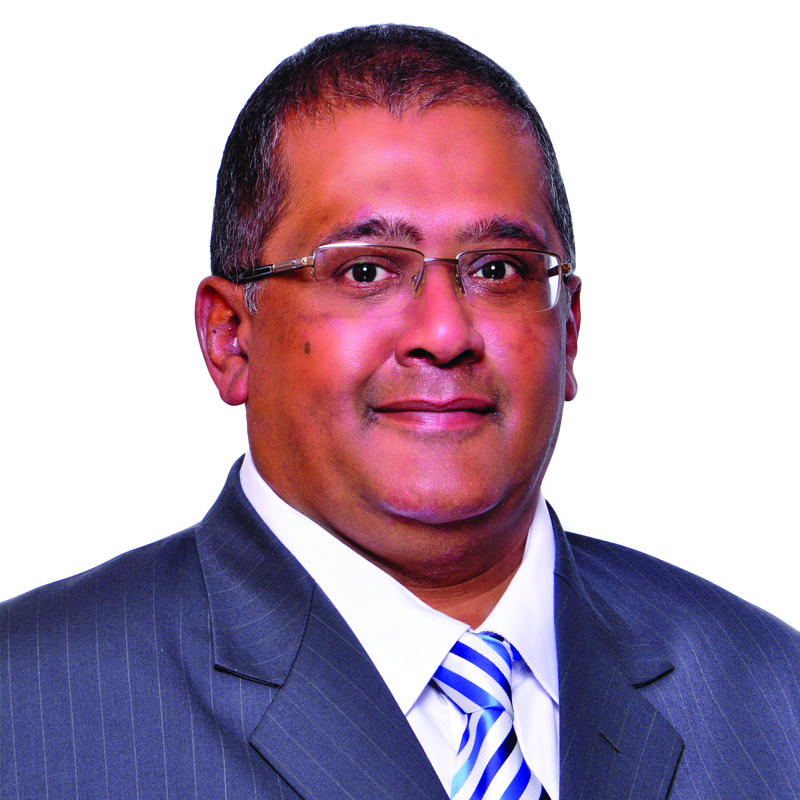
Cyber-hacking is a growing threat globally and companies could forfeit their long-standing reputations in a single day if they are not adequately protected against malware and industrial espionage.
This is why the SANRAL Board and management have decided to elevate cyber-security within the organisation, consistently working to ensure our own IT systems constantly evolve to keep pace with increasingly sophisticated threats. In the final analysis, King IV is a welcome step forward to guide the activities of both private sector companies and state-owned entities. The latter are increasingly operating in a global environment and it is imperative that we bring our entity’s governance in line with global best practice.
Roshan Morar is the Chairperson of SANRAL’s Board
Intersection
Environmental Manager Nicole Abrahams is all about finding that sweet spot between modern and natural
Describe a typical day in your job
A typical day would consist of ensuring that
SANRAL projects comply with
environmental laws, regulations and
procedures and giving advice. I use my
knowledge of the natural sciences to
protect the environment, human health
and wellbeing. I see to it that polluted
areas are cleaned up, advise policymakers
and work with contractors to reduce waste.
I also review reports, investigate
complaints and assess the threat to the
environment. I find solutions to
environmental problems and address
concerns to minimise the impact on the
environment.
What is the best part of what you do?
To know that I am a link in a chain that
ensures that developments/growing
infrastructure continue and environmental
properties are not compromised in any
way. Finding the balance as we develop
our natural biophysical environment
sustainably.
What’s the worst?
Being undermined because of my gender.
Why did you choose SANRAL?
It offered me a chance to enhance my
career, skills and qualifications. I wanted to
be part of an organisation that advances
and grows the economy of the country and
makes a difference to South Africa by
upgrading infrastructure development
projects.
What advice do you have for
young professionals who want
to work in environmental
management?
If you want a career in environmental
management, be passionate - reach out
for information and opportunities. You must
love nature and the outdoors. Study
natural science, geography, geographical
information systems and environmental
law.
A bachelor’s degree in environmental
science offers a broad approach to the
natural sciences. Classes in environmental
policy and regulation are also beneficial.
Environmental specialists often begin their
careers as field analysts, research
assistants or technicians in laboratories
and offices. As they gain experience, they
take on more responsibilities and
autonomy - and may supervise the work of
technicians or other scientists.
Some are promoted to project leaders
and programme managers. Others go on
to work as researchers or end up as
faculty at universities.
Any myths around environmental management you’d like to bust?
It’s not about being 100% environmental
activist. It’s really just being a catalyst to
promote development within the confines
of conserving our natural resources. We
are activists for sustainability, not just eco
warriors.
So who is Nicole Abrahams when she’s at home?
Hardworking, a pillar of strength,
independent, self-sustaining. My hobbies
have taken a back seat. Priorities now:
kids, family, photography and cooking.
Where did you study?
I obtained a Bachelor’s and Honours degree in environmental science and
environmental management at the
University of the Western Cape.
Why environmental management?
I suppose it started with an appreciation
for nature, therefore a deep care and love
for the environment.
Learn the Lingo
Talk like an engineer...
SANRAL Chair and associate professor of Transport Planning and Engineering at UCT’s Centre for Transport Studies Dr Mark Zuidgeest shares some choice words with us mere mortals.
Transport-related
social exclusion
Say what? Of all the different kinds of exclusion South Africans have had to suffer over the years, this one seems one of the more unnecessary - mostly because we can fix it. Transportrelated social exclusion happens when a lack of access to transport or roads infrastructure excludes people from participating in society. This is where SANRAL makes a huge difference to social development.
Stated preference survey
There really is no such thing as a free lunch. Sometimes people have to choose between two things that are both necessary to their lives. In these cases, people have to make trade-offs - for instance between time and costs or between immediate safety and long-term security. Which thing is more urgent/important? Asking people about what they might do when confronted with these trade-offs is what is known as a Stated Preference Survey.
Phantom queues
Not a long line of ghosts at Home Affairs. "Phantom queues" are major traffic queues that don’t have an immediately apparent cause. Go figure.
Volume to Capacity ratio
A measure of the opening capacity of a roadway or intersection, which refers to the number of vehicles passing through, divided by the number of vehicles that theoretically could pass through, when the roadway or intersection is operating at its designed capacity. Abbreviated as v/c. At a v/c ratio of 1.0, the roadway or intersection is operating at capacity. If the ratio is less than 1.0, the traffic facility has additional capacity. Although ratios slightly greater than 1.0 are possible, it is more likely that the peak hour will elongate into a "peak period".

Many threads, one story!
Roads run through it, excellent national roads - the N2, N6, N9, N10, R61, R71. They take you through South Africa’s second-largest province, known for its scenic beauty, game reserves, historic sights and wonderful beaches. In fact, there is just too much to do, so it is better to decide on an area or a theme and build your travels around that. If you’re a history buff, there is enough to keep you busy in the Eastern Cape. Best then to decide on, say, five historic sights and use the opportunity to travel through the province and enjoy the scenery. Coming from the north, you’ll go through Graaff-Reinet, South Africa’s fourth-oldest town. There is much to see: Reinet House, Graaff-Reinet Museum, Old Library Museum, Old Residency, Military History Museum and more. Visit the Hester Rupert Art Museum, which is in one of Graaff-Reinet’s many old Cape Dutch buildings. It has a focused collection and is a must for any anybody interested in South African art. There are about 130 works from more than 100 artists.
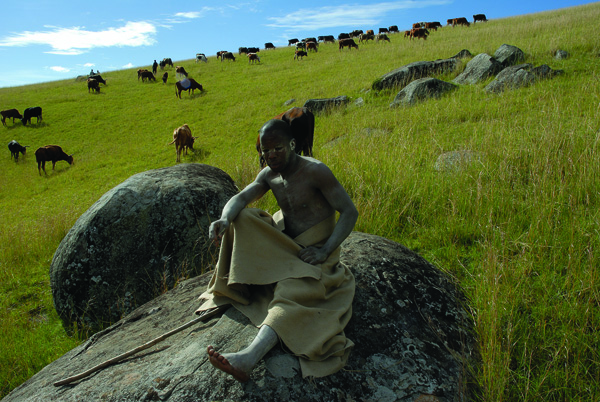
Eastern Cape Top 5
- Graaff-Reinet’s four museums
- The last remaining dodo egg in East London
- Qunu, Madiba’s home town
- 1820 Settlers’ National Monument, Grahamstown
- Donkin Heritage Trail
The original building was to be replaced by a filling station, but famous conservationist and businessman Anton Rupert, a native of Graaff-Reinet, intervened and the art museum is now managed by the town council, who named it after Rupert’s mother. Swing north to get to East London and you can view some of the oldest sights in the world. In the local museum, you will see the last remaining dodo egg, the oldest fossilised footprint and the Coelacanth, a prehistoric fish that lived in the Indian Ocean for 400 million years and was thought to be extinct until it was rediscovered in 1938. This fish was regarded as the most significant zoological find of the century. Turn south and not far from Mthatha you’ll find Qunu. A small quiet hamlet, this is where Nelson Mandela grew up and was later buried. To be where this great man started his life - and spent the happiest years of his life, he later wrote - is a humbling experience. There’s not much to do, really, but suck up the atmosphere and wonder that such a tiny place could produce such a massive figure.
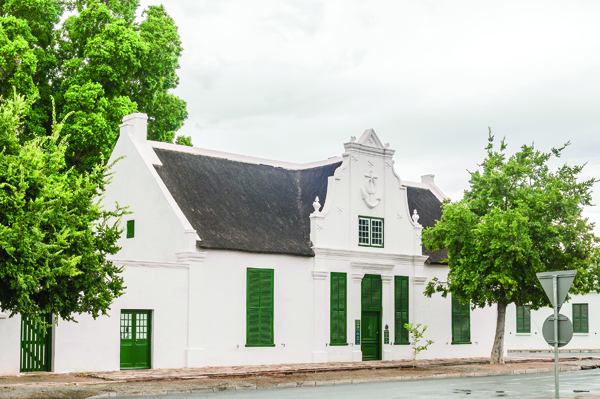

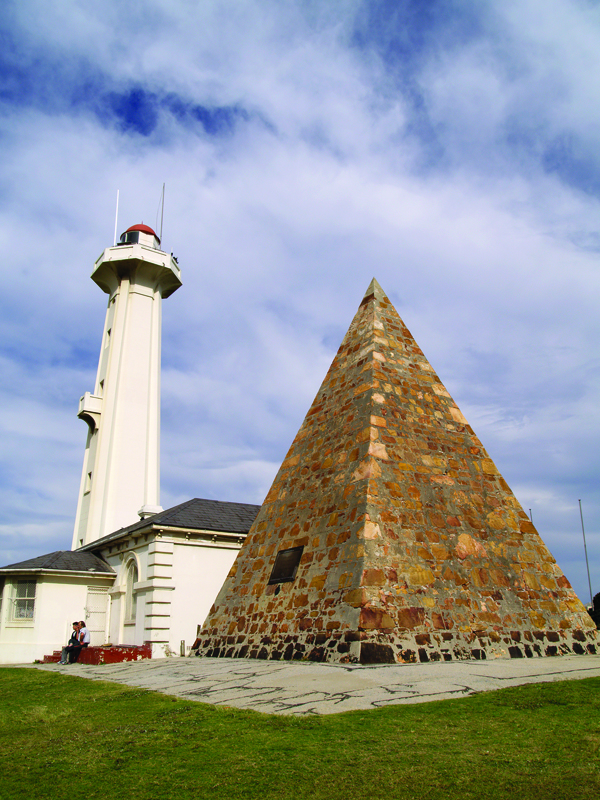 The original building was to be replaced by a filling station, but famous conservationist and businessman Anton Rupert, a native of Graaff-Reinet, intervened and the art museum is now managed by the town council, who named it after Rupert’s mother. Swing north to get to East London and you can view some of the oldest sights in the world. In the local museum, you will see the last remaining dodo egg, the oldest fossilised footprint and the Coelacanth, a prehistoric fish that lived in the Indian Ocean for 400 million years and was thought to be extinct until it was rediscovered in 1938. This fish was regarded as the most significant zoological find of the century. Turn south and not far from Mthatha you’ll find Qunu. A small quiet hamlet, this is where Nelson Mandela grew up and was later buried. To be where this great man started his life - and spent the happiest years of his life, he later wrote - is a humbling experience. There’s not much to do, really, but suck up the atmosphere and wonder that such a tiny place could produce such a massive figure.
The original building was to be replaced by a filling station, but famous conservationist and businessman Anton Rupert, a native of Graaff-Reinet, intervened and the art museum is now managed by the town council, who named it after Rupert’s mother. Swing north to get to East London and you can view some of the oldest sights in the world. In the local museum, you will see the last remaining dodo egg, the oldest fossilised footprint and the Coelacanth, a prehistoric fish that lived in the Indian Ocean for 400 million years and was thought to be extinct until it was rediscovered in 1938. This fish was regarded as the most significant zoological find of the century. Turn south and not far from Mthatha you’ll find Qunu. A small quiet hamlet, this is where Nelson Mandela grew up and was later buried. To be where this great man started his life - and spent the happiest years of his life, he later wrote - is a humbling experience. There’s not much to do, really, but suck up the atmosphere and wonder that such a tiny place could produce such a massive figure.
Planning your new wheels ?
For many buyers, the fantasy of getting a new set of wheels - sometimes with a few nice extras - can overtake the reality of having to pay for said vehicle. Whether it’s a babemagnet or a mom-van, getting external car financing is not always a given. And nobody likes that notice from the bank that reads: "financing application declined". It sort of sucks all the joy out of reading a letter from the bank. The good news is there’s no need to abandon your dreams of a hot new ride. There are many ways you can make sure your application for car finance goes through without a hitch - while keeping your household budget fat and happy enough to buy talcum powder and baby bags. Bonus. The important thing to remember here is that when you buy a car, it’s a six-year commitment to make payments of a certain amount, every month, exactly on time. Sound daunting? It doesn’t have to be. WesBank’s Rudolf Mahoney, head of brand and communications, says: "The best way to go about planning a purchase is starting with a budget and considering all the costs associated with owning a car." So let’s do that...
Start with a budget
Step one, make a list of two columns: 1) your current household income and 2) all your current expenses (even the small stuff). What’s that chocolate habit costing you per month, hmmm? The point here is figuring out what you can afford to spend over and above your niggly problem with Lindt balls. Sometimes, this will mean sacrificing a few things every month that you can actually do without (like an extra 10 shades of green nailpolish, for instance).
Subtract all the column-two stuff (expenses) from your current household income (column one). Check out the WesBank Affordability Calculator; it’ll give you a clear idea of how much you’re already spending and how much will be left over for buying and maintaining the new mom-van that you have secretly already named The Thunderhawk. Once you’ve done all that, it gets a bit easier. Now that you know what you can afford to pay every month, shop around! It is important to compare car prices - as many as possible - to find the right deal for your budget. So here’s an interesting stat for you: on average, a young professional who buys their first car when they’re about 25 years old, and replaces their car every three years or so, will have financed about eight cars in their life (before the golf-cart years). First-time buyers must spend wisely. That’s where investigating comes in...
Know all the costs
Once you have your budget, give yourself a massive pat on the back - that was the hard part. Now, you can determine how much you are willing to spend on a car. Really think about it, though; buying a car isn’t just about the monthly instalment. There will be many other Thunderhawkrelated expenses, which can sometimes be equivalent to the instalment itself. Think about fuel efficiency - the cost of petrol for the distances you typically travel in a month will also make a dent in your household budget, not to mention that fuel costs don’t exactly remain static. What about toll fees and licensing fees? Then there’s regular car services and repairs to keep The Thunderhawk healthy. And don’t forget insurance premiums. Remember, maintenance costs are related to mileage, so if you’re a door-todoor door salesman, your ride will require more frequent services. Not every car includes a service plan, so your monthly budget should include some savings ring-fenced for future service costs. Saving R420 a month will be easier than coughing up R5 000 for an unexpected service and repair bill. And don’t forget your tyres. Look at what replacement tyres are reasonably priced for your car. This is especially important given how easily a pothole could ruin your day. Insurance is mandatory on any financed vehicle. So ask insurance companies to give you a quote for the car you’re considering. This way, you can ensure that the premium fits your wallet. Although a grudge purchase for some people, a monthly insurance premium is actually cheaper than paying for accident repairs out of your own pocket. And if some inconsiderate thief steals The Thunderhawk, imagine having to keep paying monthly instalments on him. But good insurance will have your back here. We’re big fans of less stress.
Account for inflation
Now that you have a particular deal in mind - and you’ve thought about all the regular stuff like petrol and maintenance - you should still leave enough leeway in your budget to accommodate rising costs. Although interest rates have remained relatively stable over the last year, a hike in the rate will mean a higher monthly instalment. Additionally, fuel price increases will increase the monthly mobility cost, so it is wise to leave a bit of a cushion to absorb the impact of these costs.
Structuring contracts
So you’ve done all the homework, now you can look at how you’d like to structure your finance contract. A shorter finance term will mean higher monthly repayments, but paying far less in interest. Also, you’ll be able to trade The Thunderhawk in sooner, while he’s still valuable on the secondhand market. WesBank’s Vehicle Payment and Insurance Calculator will let you play around with all the variables for structuring your contract. Useful, no? A longer finance term will help you lower the payments and puts less pressure on your monthly budget. The maximum contract term is 72 months, so you should think about what it means for you to take on a six-year financial commitment. The easiest and smartest way to reduce monthly instalments is by putting down a large deposit. This is essentially a lumpsum initial payment that lowers the amount of money you’ll have to borrow from the bank. Borrowing less means paying less interest over time. You could also consider making a balloon payment - which is a large amount that you pay at the end of your contract, but think about it carefully, because you’ll have to save up enough money every month to make that balloon payment meaningful

Books for the long road.
At a time when there is so much knowledge, data, facts, figures and jargon floating around in the aether, it’s well-nigh impossible to get even a fraction of useful, reliable information about an unfamiliar topic. It’s often useful to turn to a genre of publications that became pretty popular in the ’90s, with the For Dummies series - how-to books for beginners. Here’s our pick of the best guides for newbies, offering easy and fast ways to understand difficult and mysterious subjects.

THE BEST POCKET GUIDE EVER FOR WEALTH-BUILDING INVESTMENT
Jillian Howard
funds, endowments. If you don’t even understand these words, never mind how they can make you financially independent, this is the book for you. Perhaps start by reading the four simple steps right at the end that will turn you into an investor. Don’t hesitate: start today and get peace of mind.

THE FIVE MINUTE MBA
Wayne Brown
Do you think an MBA is the gateway to managerial success, but far too long and arduous an academic route? Not so, says Wayne Brown, dedicating his booklet to "all the bright start-ups and the removal of all bozos from power". He lays out 10 basic rules to managerial success and explains them in a few pages. For instance: always get on with the person with the money (i.e. the customer); do something immediately - start fixing mistakes now; behave as you expect your staff to behave; when put in charge, take charge; devolve responsibility and accountability. Well, maybe not an MBA as such, as Brown brags, but certainly basic things to do which your manager and possibly you have just forgotten in the daily hurly-burly of trying to make a good company a better one - and keeping your staff. Possibly a good present for your boss on her birthday?

THE MINI MANUAL OF ZODIAC SIGNS
Unknown
So you don’t believe the stars can lay out who you are and what is going on in your life? Well, many people do and follow their star signs in newspapers and magazines for a private peek into what may come for them. No author claims responsibility for this work; there is no mention of the famous Madam Rose, who is the all-time guru on what the stars can foretell. Really, no author is mentioned, but you can test the book thus: an Aquarian is completely different from other people, is the friendliest person around, is an intellectual, faithful in love, needs a fulfilling career, hates the consumerled society yet relishes occasional bouts of extravagance and understands the importance of a healthy diet. We know an Aquarian and this is a totally accurate description. Go buy the book, you’re in it!

DREAM DICTIONARY & RECORD BOOK
Pamela Ball
If you’re not into the stars, you may also be sceptical about this offering. It is described as a simple guide to interpreting your dreams. Author Pamela Ball sets out space right in the beginning so you can write down your dream and then turn the pages to find a reference to its substance. Sigmund Freud was the first modern person - way back a centuryand- half ago - to attempt to lay out what it means when you have a particular dream. This is a subject taken seriously by many and a psychologist can help you work through your dreams. This elegant book does so in simple terms. It takes a wide variety of subjects and tells you what they may mean, but insisting that for every person his/her own background is a telling factor in understanding the meaning. So, you may dream of a house, an island, a wind, a jackal, lightning, a wedding. You will find some reference to what this may mean in this booklet. At the very least, it is a fun read and may actually put your mind at ease.
Taming the beast
You know the feeling… someone changes lanes without indicating, then brakes in front of you. Your heart starts pounding and your blood boils. You can feel your face going red. You lean on your hooter and make a rude gesture... Sound familiar? We’ve all been there. But for a certain portion of the population, the anger doesn’t stop there. Some people, instead of taking a deep breath and completing their journey, feel the need to "teach him a lesson". They’ll pursue the other vehicle, get out of their own car and, at best, commit a verbal assault; at worst, an act of physical violence. This is road rage. "When you are in a car, especially in a congested environment, your reptilian brain - the part of your brain responsible for survival - takes over," says Jacques van Zyl, a psychologist who specialises in road behaviour. "There is limited space on the road and it becomes a competitive situation. You need to get home or to a meeting, and other people are in your way." He explains that your brain sends a message to your adrenal glands to produce adrenalin, which is the neurochemical responsible for the fight or flight reflex. And this takes place in a brain already preconditioned for stress - most of us are dealing with financial pressure, family worries and work stress every day. Then, the car itself adds to the rage mix. "The car becomes an extension of your personality - you feel untouchable and it becomes a weapon. It makes you feel powerful. It increases the mania. You feel that you could get away with whatever act of violence you want to commit." At this point, most people, most of the time, will resort to some kind of outburst, but there is a condition that American scientists diagnose as intermittent explosive disorder (IED) and people who suffer from it - a very small percentage of the population, Van Zyl stresses - lose control when they get that rush of adrenalin. "The feeling only goes away once it’s been spent through an attack. Those are the people who pull out a gun and shoot."
No driver’s an island Road rage in its truest form - where it leads to some kind of assault - is symptomatic of a broader problem, Van Zyl explains. Globally - and in South Africa in particular - there is a lot of unchecked aggression and prejudice. "If for instance, you believe that women are bad drivers, every time you see a woman pulling off too slowly, you’ll take that as confirmation of the problem. In this case, making the next step to ‘teaching her a lesson’ is not such a big leap." And the fact that people on the road are already in a heightened state of aggression about so many things means that situations are often escalated rather than defused. "Road rage is often not the result of one person’s out-of-control anger, but of both sides contributing to the situation." Since the problem starts way before you get into the car, it makes sense that working on a solution also needs to happen before you’re on the road. If you know that sometimes you can feel a little out of control behind the wheel, or your family has mentioned that they feel unsafe in the car with you, start to think seriously about your driving behaviour. Van Zyl suggests taking the following steps: 1. Never get behind the wheel if you are already angry - it’s like driving drunk 2. Never drive drunk - alcohol reduces your inhibitions 3. Work through your triggers. What most often makes you angry on the road? Discuss it with your family - or even a therapist. Then, try to replace your current response with healthy thinking. Take a deep breath. Make a conscious effort to shrug it off. Remember that the rage adds no value to your life. Remember that other people are not your enemy or your competition. We all share this road space and we all have somewhere to be. Let go of your prejudices. Being angry or out of control because someone is a certain age or race or gender is not justified. Don’t look for a reason to justify your rage. If your general anger in life is as a result of unfulfilled ambitions, toxic management at work or relationship problems at home, address the cause. Seek professional help to work through your issues. If you frequently suffer from outbursts - at the shops, at work or with your children - then you also may need professional help for an explosive disorder. Manage your time better. Accept that roads can be congested. Leave early enough to complete your journey with time to spare. Don’t add panic and anxiety to the emotional mix you are already experiencing on the road.
South Africans are known to be aggressive drivers and road rage incidents frequently make the headlines. We spoke to a road rage expert about where that rage comes from - and what to do about it

Remember that other drivers are also stressed and angry - don’t enter into a situation in which you and another driver are likely to blow a fuse. Eat healthy food and drink enough water throughout the day - especially if you have a car trip coming up - so that you don’t have a blood-sugar low to contribute to your bad mood. Van Zyl sums this all up as: "Mind your drive, then drive your mind." Be aware of your driving experience and then gain control of your thinking and emotions. If you become a victim On the other hand, it is also very easy to get into a situation where you are on the receiving end of someone else’s rage. Van Zyl says that road rage incidents are often the result of two people refusing to back down. Remember that there are people out there who attack and kill other road users, so do everything you can to calm the situation down, rather than bring it to a boil. "Drive away if you can; apologise if you must. It is not cowardly to back down and it may even save your life," he says. If you are being pursued or threatened, drive to a petrol station or a police station, where there are other people - this will almost always force the other party to think twice. If you are somehow trapped or constrained, get a friend or family member on the phone as quickly as you can and start describing your assailant’s details. Van Zyl adds that if you are confronted with an escalating situation, the worst thing you can do is get out of your car. Be aware that the courts view your exiting your own vehicle as "intent", so whatever happens next will be regarded as your fault, even if the other person assaults you. By the numbers There are currently 11.9 million vehicles registered in South Africa and Gauteng has 4.5 million of those. Van Zyl says a recent study revealed that among Gauteng drivers, 48% said they either experience or perpetuate some form of aggression on the road every day. If you consider that there are 4.5 million cars on the road - which probably do two trips a day - that’s almost 4.5 million incidents of anger on Gauteng’s roads every day. "That tells you there’s a problem," says Van Zyl. "We all need to start finding ways of driving better and calming down." As with anything, the first step to recovery is admitting there is a problem. With Van Zyl’s observations making it clear that South Africa does have a road anger problem, it’s now up to each and every one of us to make a concerted effort to mind our drive and drive our minds.
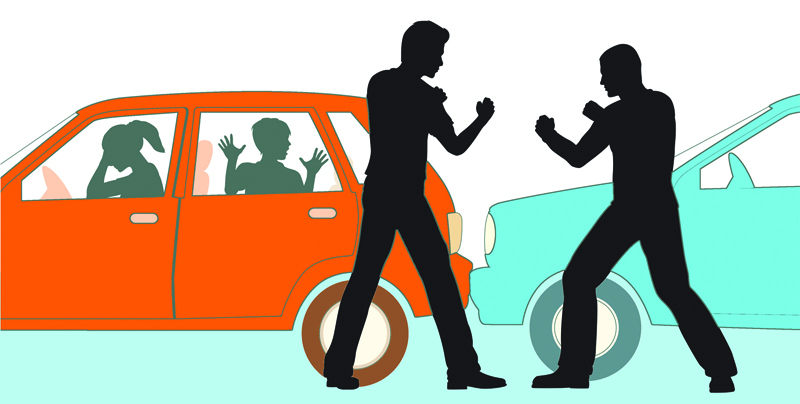
Don't take it out on taxis
According to the South African National Taxi Council, the taxi industry employs more than 600 000 people and transports 15 million commuters per day. It is serviced by 300 000 vehicles, the majority of which are in Gauteng. Psychologist Jacques van Zyl says that minibus taxis are often the justification for instances of road rage - and their erratic driving is frustrating for other drivers. However, as a driver, you know that taxi drivers are going to stop suddenly to release their customers and then weave through traffic to make up for lost time. While there is no excuse for reckless or negligent driving, accept that taxis are part of the road user experience and don’t let them get to you. Remember that every taxi carrying 15 individuals means that there are 15 fewer vehicles on the road for you to contend with - and 15 people being carried to their jobs to keep the economy of our country turning over.
Gauge your rage
Jacques van Zyl is currently carrying out a study on South African road behaviour. If you participate in the study, you’ll get a free copy of the report. You can participate here: http://www.assessmentworld.com/aw_public. Click on Road Behaviour test
Bakwena invests a billion in road upgrades
Bakwena Platinum Corridor Concessionaire has an ambitious R1.0 billion schedule of maintenance and construction projects, which are scheduled for 2017. A reseal of the N4 in Dinokana by Actophambili is already underway. The project has a completion date forecast for May 2017 and a cost budgeted at R34-million. Reconstruction work will take place on the N4 between the towns of Zeerust and Lehurutse between February and December 2017. The R95-million contract was awarded early in 2017. Between Zeerust and Vaalkop on the N4, another R250-million reconstruction contract is estimated to complete during March 2017 with an additional R7.7-million for a storm-water upgrade.
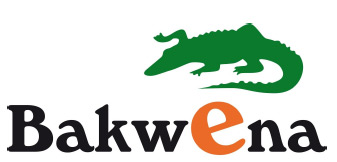 From Vaalkop to the Groot Marico boundary on the N4, an estimated R273-million reconstruction contract will be awarded during July 2017 for an expected duration of 20 months. Between the Groot Marico boundary and Swartruggens a R164-million works contract got underway in September 2016, with a completion date scheduled for December 2017. The works are running slightly ahead of schedule and may be complete during November. The R50-million expansion of the plazas at the Brits and Marikana toll plazas was awarded early in 2017, with construction to commence in February and completion estimated by December. A R12-million contract for the construction of a third lane at Doornpoort on the N4 East will be awarded early in 2017 with commencement of construction forecast for February 2017. Finally, a R117-million reconstruction project on the N1 North between Pumulani and Hammanskraal will also get underway between February and December 2017.
From Vaalkop to the Groot Marico boundary on the N4, an estimated R273-million reconstruction contract will be awarded during July 2017 for an expected duration of 20 months. Between the Groot Marico boundary and Swartruggens a R164-million works contract got underway in September 2016, with a completion date scheduled for December 2017. The works are running slightly ahead of schedule and may be complete during November. The R50-million expansion of the plazas at the Brits and Marikana toll plazas was awarded early in 2017, with construction to commence in February and completion estimated by December. A R12-million contract for the construction of a third lane at Doornpoort on the N4 East will be awarded early in 2017 with commencement of construction forecast for February 2017. Finally, a R117-million reconstruction project on the N1 North between Pumulani and Hammanskraal will also get underway between February and December 2017.
Liam Clarke, Commercial Manager of Bakwena, says: "Bakwena takes pride in ensuring that the 385 kilometres it manages under its concession contract are maintained to the highest international standards. The upgrades will enhance the motorists driving experience and reduce delays while improving the overall safety Clarke says that South Africa’s national roads are vital to economic activity, job creation and many social benefits, all of which may suffer unless roads were properly maintained. It is also far cheaper to do regular maintenance than to have to do major repairs following more serious damage. "Regular upgrade and maintenance therefore saves the country millions of rands in the long term," concludes Clarke.
Forewarned is forearmed
Want info? Need help? N3TC has got you covered
There is more to being a safe driver than adhering to traffic rules and regulations. Being informed of road and travel conditions helps you make safe choices prior to and during your journey," says Con Roux, spokesperson of N3 Toll Concession (N3TC). N3TC manages the N3 Toll Route between Heidelberg in Gauteng and Cedara in KwaZulu-Natal. This national route, linking South Africa’s landlocked provinces to the Port of Durban, can at times become heavily congested, especially on peak traffic days or when delays are caused by poor weather or emergencies along the route. It is essential to plan your trip in advance and stay up-to-date with the road and traffic conditions ahead. Armed with the right information, both leisure and commercial travellers can set realistic targets and avoid taking unnecessary risks.
"N3TC goes the extra mile to help ensure drivers are as safe as possible," says Roux. "We manage a central Route Control Centre (RCC), into which all information regarding road conditions, incidences, bad weather and traffic updates are fed. From here, vital information is disseminated to travellers via a number of communication platforms. We use SMS alerts and regular tweets and travellers can dial the company’s 24-hour customer care and RCC line." N3 Route Control Centre is always on standby Before starting your journey, we strongly advise that you obtain the latest road and traffic information for the N3 Toll Route. You can do that by contacting the 24-hour N3TC Route Control Centre on 0800 63 4357 (0800 N3 HELP), or talk to N3TC on Twitter @N3Route. "Forewarned is forearmed," says Roux.
Should you experience any difficulties along the N3 Toll Route, contact the RCC. The nearest N3TC Route Patrol Team will be dispatched to assist you. These highly trained teams are geared to provide help at crash scenes and with vehicle breakdowns. They also provide basic emergency medical care, assist with fire-fighting, remove hazardous objects from the road and provide regular route patrols to ensure conditions along the N3 Toll Route remain as safe as possible.
Harnessing the arts
The power of the creative arts is used in a compelling initiative that communicates positive messages to young people in the North West. The Bakwena Platinum Corridor Concessionaire launched its drama project in 2012, with the initial aim to focus on road safety issues, especially relating to alcohol abuse as a cause of accidents. The positive response from learners, teachers and parents enabled Bakwena to expand the scope of the programme and to tackle other societal issues. Some 17 schools in the province are currently involved in the project with 28 teachers and 255 learners using their creative talents to stage productions. Training and workshops are conducted in partnership with the South African Red Cross Society and the department of education and sport development. Issues such as road safety, sexual abuse, teen pregnancy and poverty are brought out into the open and addressed through peer education. Participants are encouraged to initiate their own outreach programmes and, in the past year, they reached more than 4 600 learners through drama and creative arts.
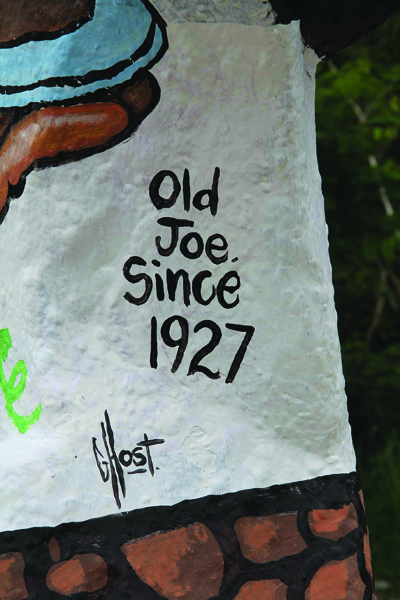

90-year-old rocks new look
The N4 Toll Route’s most recognised rock, Old Joe, has undergone yet another transformation. However, this time the coat of paint Joe is sporting is a familiar one, as he previously wore it back in 1969. He may be mineral, but Old Joe has brightened the days of many human travellers and construction workers in his time. The anthropomorphised rock’s recent makeover is to commemorate his 90th birthday, following discussions on social media relating to Old Joe’s history and previous "outfits".
The rock was discovered in 1927 during the construction of the first road through Schoemanskloof. It was found by construction workers who thought it bore a likeness to their site supervisor, Joe Barbados, who was well liked by his crew. They painted and erected it as a landmark along the Patatanek Pass, in honour of their supervisor’s dedication, passion and efficiency during construction. Legend has it that Old Joe looks after road users on the N4 Toll Route, so it’s good luck to hoot or wave at him when you pass by, to ensure a safe journey. Since Old Joe has crept into the hearts of all TRAC employees - and clearly many of the road’s users - TRAC wanted to make this 90th anniversary special and allow Old Joe’s most ardent fans to reminisce about the early days of the rock formation. After uncovering a photo of Old Joe from 1969, well-known Lowveld artist Ghost set to work on the transformation. It took Ghost approximately four hours to restyle Old Joe’s outfit, but the effort was certainly worth it. TRAC is confident that the road users of the N4 Toll Route will thoroughly enjoy Old Joe’s new (retro) look and appreciate the historical meaning behind this friendly landmark. Harnessing the arts
Just a spoonfull...
Sugartax ? What sugar tax ?
Sugar tax is a big deal lately and for good reason - we eat too much of it too often. But sometimes your soul needs more than chicken soup. A little indulgence now and then can be good for you in ways that steamed broccoli simply cannot.
Happy Crazy Milkshakes
These milkshakes are fun and over-the-top. Let your creative juices flow and design your own mouthwatering masterpiece. Kids and grown-ups alike will love these milkshakes. And for a boozy version for adults, just add some strawberry liqueur.
Ingredients:
1 cup milk
3 cups vanilla ice cream + 1 extra scoop
2-3 drops pink food colouring
4 strawberry wafer biscuits
Decoration:
White chocolate
Pink food colouring
2 fresh strawberries
2 marshmallows
Sprinkles
2 strawberry wafer biscuits
Pink straw
Pink candyfloss
Method:
First prepare the milkshake glasses. Carefully melt the chocolate in the microwave on medium-high for about 1 repeat heating at shorter intervals, every 15-20 seconds. Stir continuously. Do this until the chocolate has a velvety smooth consistency. Add a few drops of pink food colouring and mix. Dip the rim of the glasses in the melted chocolate and then dip it in a small plate covered with sprinkles. Set aside to harden. Dip the fresh strawberries in the same chocolate and set aside. Then dip the marshmallows in the same chocolate and the sprinkles. Put it on top of the straws and set aside to harden. Smear the remaining pink chocolate roughly on the inside of the milkshake glasses for a beautiful effect. When all the accoutrements are ready, it is time to prepare the milkshake. Add the milk, 3 cups vanilla ice cream, a few drops of pink food colouring and 4 wafer biscuits to a blender and mix on high. It is important to literally add only 2-3 drops food colouring so that the milkshake is a very light pink.
How to assemble:
The secret here is to put a big scoop of vanilla ice cream in the milkshake glass before adding the milkshake itself. Once the milkshake is added, the scoop of ice cream will rise to the top and make it possible for the garnishes to stay afloat. So, without further ado, add the milkshake, see the ice cream scoop float to the top and start adding the strawberries, the wafer biscuits, the straw with the marshmallow on top and then the pièce de résistance - the pink candyfloss. Et voilà! Admire your creation, smile and dig in.
Pear and almond croissant pudding with salted caramel sauce
This mouth-watering pudding is the epitome of comforting soul food.
Ingredients:
4 big croissants
half tin pears, drained
Handful raw almonds, roughly chopped
500ml cream
half cup castor sugar
half tsp ground cinnamon
Pinch of salt
1 tsp vanilla extract
Salted caramel sauce:
125ml canned caramel, heated
60ml cream
30ml melted butter
half tsp sea salt flakes
Method:
Grease a 30cm ovenproof dish and set aside.
Cut croissants into ±1cm slices and place neatly in the prepared dish.
Cut the tinned pears into thin slices and place in between each croissant slice.
Sprinkle the chopped almonds over the croissants and pears.
Gently whip the cream, sugar, salt, vanilla extract and cinnamon until the sugar has "melted".
Pour it over the croissants and allow it to stand for 20 minutes, before baking at 170 degree celsius for 20 minutes.
Caramel sauce:
Mix the caramel, cream and butter together until smooth. Serve with the caramel sauce, sprinkle the sea salt flakes and add some whipped cream to break the sweetness. Enjoy.
TIP: This pudding can be prepared ahead of time and only put in the oven when needed. So good.

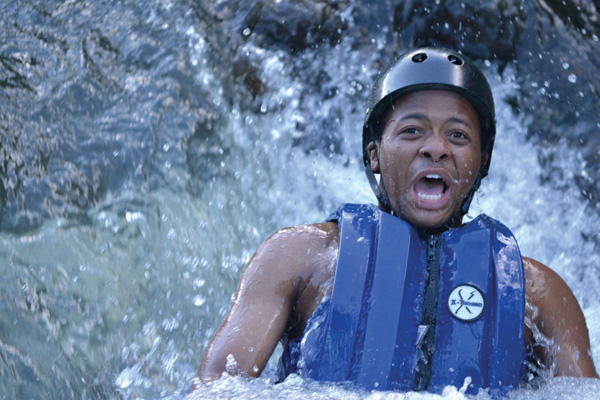
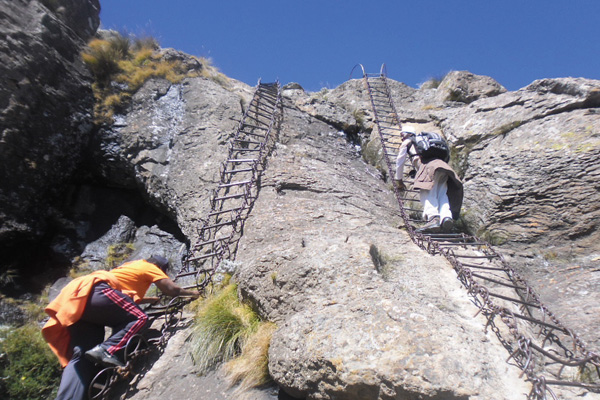
The N3 Gateway Tourism Association route streches from Pretoria in the North to Valley of a Thousand Hills in the South, traversing provinces, namely KwaZulu-Natal, Free State, Mpumalanga and Gauteng. The region incopeorates cross-border tourism with Lesotho thro Phuthaditjhaba, Caledonspoort and Sani Pass and includes the Battlefields Route up to Newscastle.
The N3 Gateway has much to offer from mountain biking; fishing; zip lining and hiking to heritage tourism; arts and crafts; scluded retreats; health spas, wedding and team building venues.
We invite you to explore our website www.n3gateway.com and discover the N3 Gateway region. You can find over 150 itinerary ideas on the n3Gateway website to suite your self-drive or guidedd holiday needs. Should you be looking for a 4x4 holida, horse riding excursion or a multi regional tour; the N3Gateway website has it all!
Stellenbosch Smart Mobility Lab
The Stellenbosch Smart Mobility Lab (SSML) was established in the Faculty of Engineering at Stellenbosch University in June 2014. It focuses on technology applications to transport problems (also known as Intelligent Transportation Systems). The SSML provides a platform for the development of innovative and cost-effective transportation solutions for developing countries. This stateof- the-art research and teaching environment, established in partnership with SANRAL, is specifically geared towards addressing traffic problems in developing countries like ours. The SSML is positioned to help make Stellenbosch the first transportationorientated "smart city" in South Africa. A smart city incorporates a wide range of system improvements, each designed to move people and goods more efficiently - it uses data, information technology and communications to optimise infrastructure usage and improve services such as electricity, communications, infrastructure management, water provision and transportation. Associate Professor of Intelligent Transportation Systems (ITS) at Stellenbosch University Dr Johann Anderson said: "Stellenbosch is well connected with surrounding areas - with five arterial routes extending from the town centre in a radial configuration. These radial routes then join to form a single north-south arterial road west of the town centre - Adam Tas Road - which is the most congested during peak hours of traffic." This makes Stellenbosch the perfect testing ground for ITS applications in South Africa, which can then be tested in the SSML and distributed throughout Africa. The Smart Mobility Lab, which has been used by approximately 150 students since 2016 for research purposes, is a physical environment based in the Civil Engineering Department of Stellenbosch University. It facilitates undergraduate and postgraduate research in transportation engineering and ITS applications. The lab is shared by students working on transportation issues from multiple disciplines, including civil engineering, electrical and electronic engineering and industrial engineering. It is a rich source of information for anyone interested in building a better, more efficient future for our country. The students who frequent the Smart Mobility Lab represent a wide range of interests even within their fields, from transport safety, traffic engineering and systems engineering to computer programming and electronic development. The lab environment thus encourages interdisciplinary research that can provide a more complete picture of how South Africa moves and what effects changes in that movement. The research facilities at the SSML are primarily sponsored by our industry partners and include a traffic signal installation, with signal heads and signal controller; a video wall with a link to the SANRAL Cape Town Freeway Management System (FMS); multimodal traffic flow simulation software VISSIM and VISUM; and a link to the TomTom historic and live data portals, for access to probe data. SANRAL’s FMS video wall, with its link to the Cape Metropolitan area’s mobility data, provides live CCTV footage from more than 240 cameras, which cover approximately 155km of the busiest freeways in Cape Town. And if that doesn’t sound like a transport nerd’s pet fantasy, consider that the live feed is 24/7 and provides real-time access to data collected from vehicle detector sensors (VDS).
This means the SSML can observe vehicle movements in their normal environments for research. There’s a massive emphasis on live data collection during peak periods by means of VDS at the SSML. The idea is to collect the video footage necessary to analyse traffic incidents, as well as keep track of traffic volumes. So the link to the Cape Town FMS network is absolutely crucial for ongoing research at the Smart Mobility Lab. SANRAL’s Western Region Engineering Manager for Operations, Randall Cable, said: "New ITS techniques, such as the computer vision technology developed by Hardy van Zyl, a graduate of the SSML, assist traffic engineers to analyse and understand traffic patterns. This analysis of data assists the SSML to conduct future research into ITS solutions - not only to the congestion on roads in Stellenbosch, but also in ways to enhance traveller information, made available to users of the local transportation system further afield. "This will greatly contribute towards the improvement of mobility in the smart city environment, with an emphasis on providing sustainable and cost-effective solutions for developing countries."
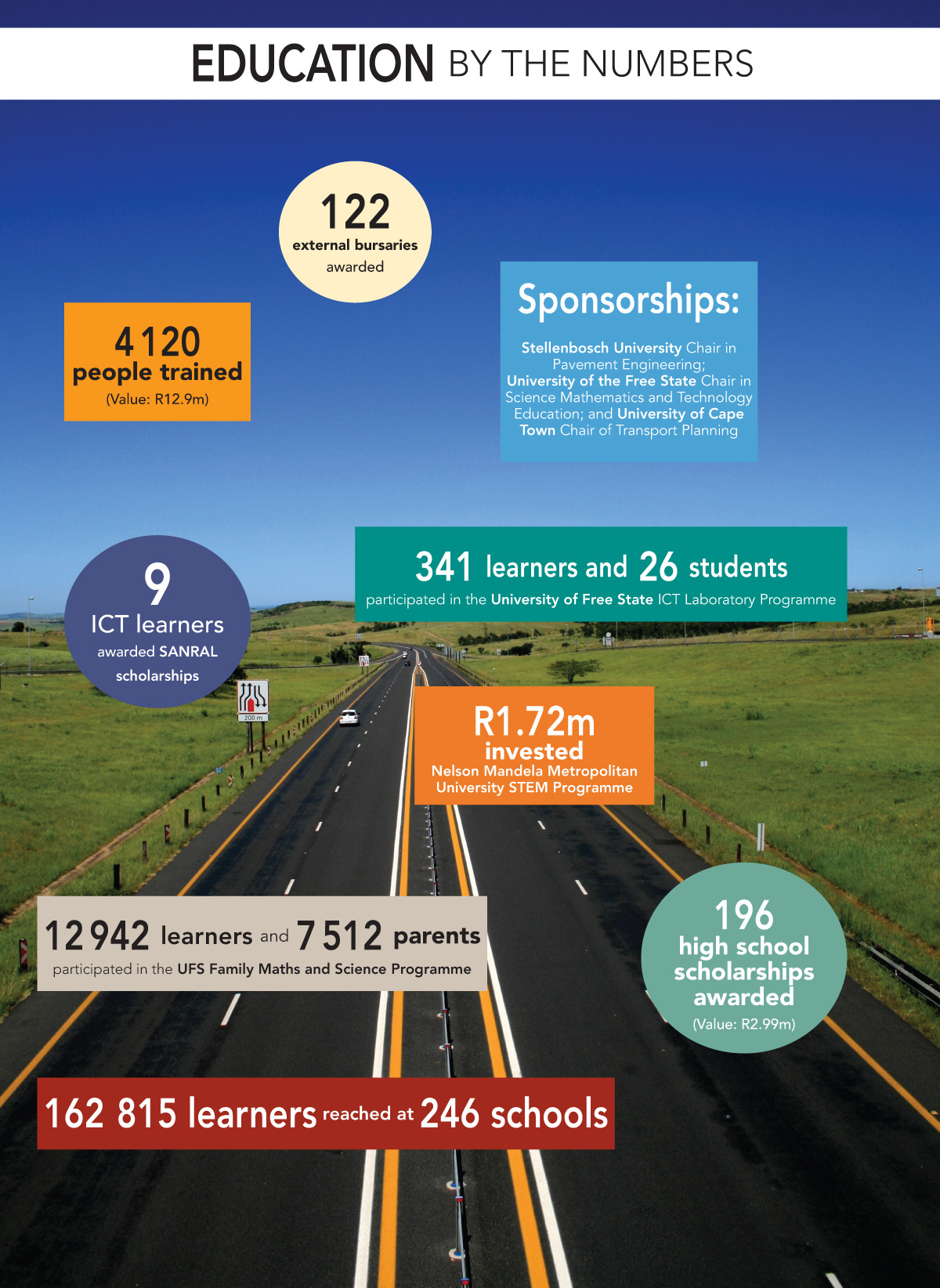
Gardener’s Folly
Knowledge is the best defence in everything. Forewarned is forearmed. "Be prepared!" they say (yes, them). They had forearms. It sounds as if I’m about to launch a mad battleplan for taking over the world, doesn’t it? Sadly, no. I’m actually trying to identify the best spot in my garden to plant tulips.
Step 1: Knowledge.
Dutch professor of botany Carolus Clusius brought seeds from Turkey in the late 16th century and raised tulip bulbs, which sparked Tulipmania in Amsterdam. From my initial research, Amsterdam seems like a fun place for any kind of mania. OK, that doesn’t help me. Further research tells me that bulbs should be planted in a pot in April and kept in a cool spot, until the plant is about 10cm tall, after which it has to be moved into a sunny spot, otherwise the bulbs won’t flower. Well, that doesn’t help me either. I want them in my garden, not in a pot. Good news is tulips are the "bees’ knees". Honey bees love them, because they have easy access to the pollen and we all know that the survival of the planet depends on promoting bee activity.
 Step 2: Forewarned.
Step 2: Forewarned.
I can plant tulip bulbs directly into the soil under a shrub or tree that provides filtered sun during midday heat, but full sun in the mornings. I happen to have just such a spot in my garden. My heart lifts! BUT: Don’t plant tulip bulbs from the tall variety, as winds and draughts will just blow them over. I look at the bulbs I’ve got. There’s nothing to indicate how tall these little suckers are going to be. Conundrum. I say nevermind, because there is always...
Step 3: Be prepared.
I dig a shallow hole of 20cm wide and line it with plastic netting (didn’t have any wire mesh). This will help keep the plants anchored and it has the added benefit of protecting the roots from mole rats (yuck). Voilà! My tulips are in a sheltered spot, where they get the morning sun and I toast their future with a Sauvignon Blanc. Because wine not? Four months later, there they are! Tall, strong and golden. I’m so excited with my success that I’m off to the nursery for my next challenge. For the boffins out there, tulips belong to the family Lilioideae. Say that five times fast.
Bridge of birds

SANRAL knows that environmental management is a very important part of building and managing roads. Constructing and operating roads can change the lay of the land, affect water resources and cause pollution. It can be particularly challenging when construction is in an environmentally sensitive area such as the Barberspan Bird Sanctuary in North West, one of South Africa’s most important bird havens. Barberspan was one of the first wetlands in South Africa to be covered under the Ramsar Convention, an international treaty for the conservation and sustainable use of wetlands, and is home to thousands of birds. It’s an important site for ornithological research and a premier birding destination. Bird numbers at any time exceed 20 000 from 350 different species. In September and October, as the summer rains reach the area, the pan is often found teeming with more than 40 000 water birds, making it a bird lover’s paradise.
In addition to flamingos and pelicans, Barberspan is home to maccoa duck, chestnut-banded plover, black-necked grebe, Namaqua sandgrouse, greybacked sparrow lark and swallow-tailed bee-eater. In days gone by, Barberspan was just a large, temporary pan in the fossil bed of the Harts River, formed and enlarged by northerly winds and massive herds of springbok trampling the edges of the waterhole. The N14 Bridge is of particular environmental interest, because its construction took into account the swallow colony living under the old bridge. The new bridge crosses the Sanctuary on the outskirts of Delareyville.
The rehabilitated and improved section of the N14 route between Delareyville and Sannieshof is making an important difference to both the community and bird refuge. It was officially opened by Deputy Minister of Transport Sindisiwe Chikunga in March 2014 and is a vital link between Gauteng, North West, Northern Cape and Namibia. It brings commerce, growth and prosperity to the area while safeguarding its valuable natural heritage. SANRAL observed an important environmental impact recommendation not to destroy the existing bridge with the swallow colony underneath it in the construction of the new one.
Did you know?
The Barberspan Bird Sanctuary was created by herds of springbok trampling the area around the waterhole and thus creating the sprawling pan that is one of the largest waterfowl reserves in southern Africa.

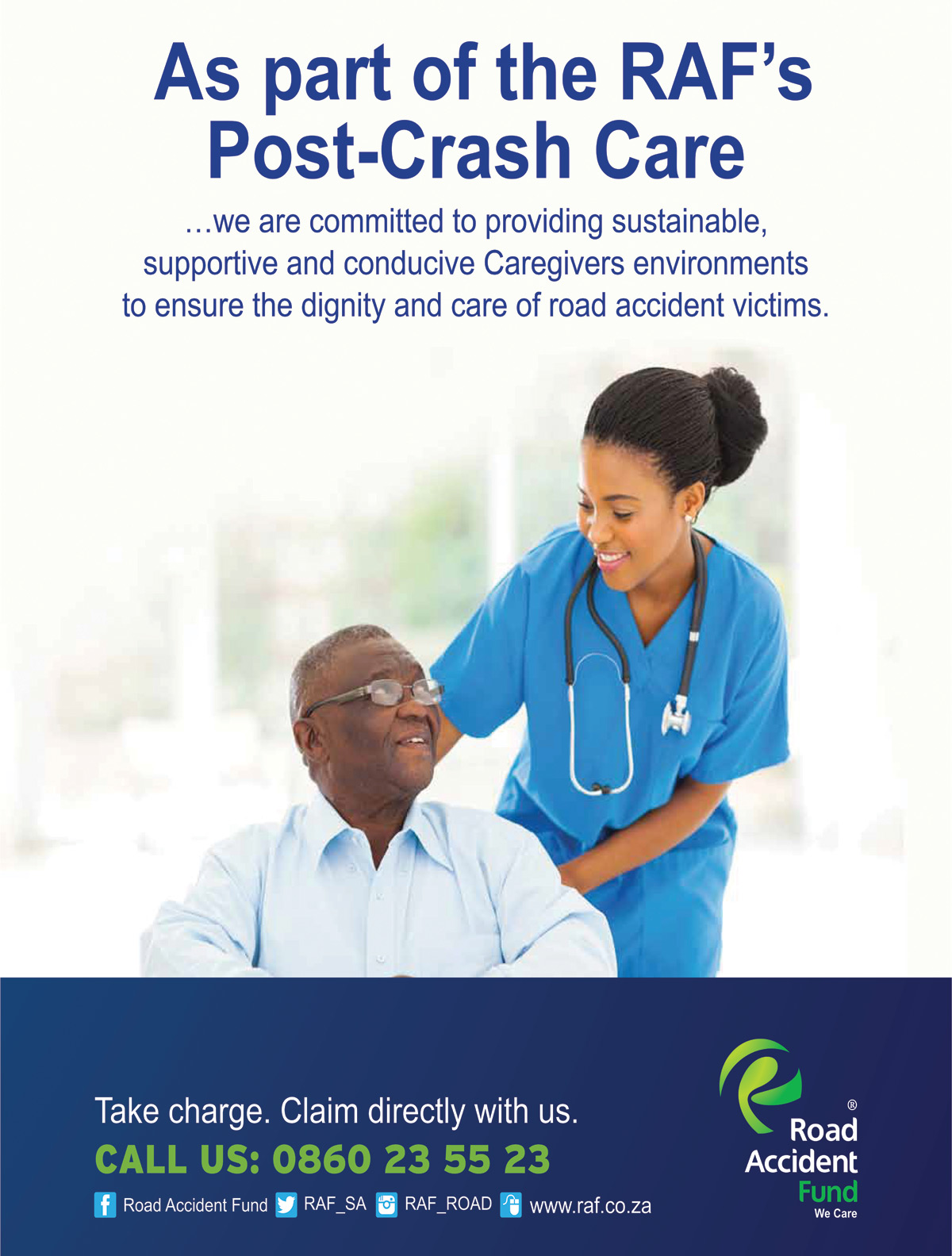
The road to fame
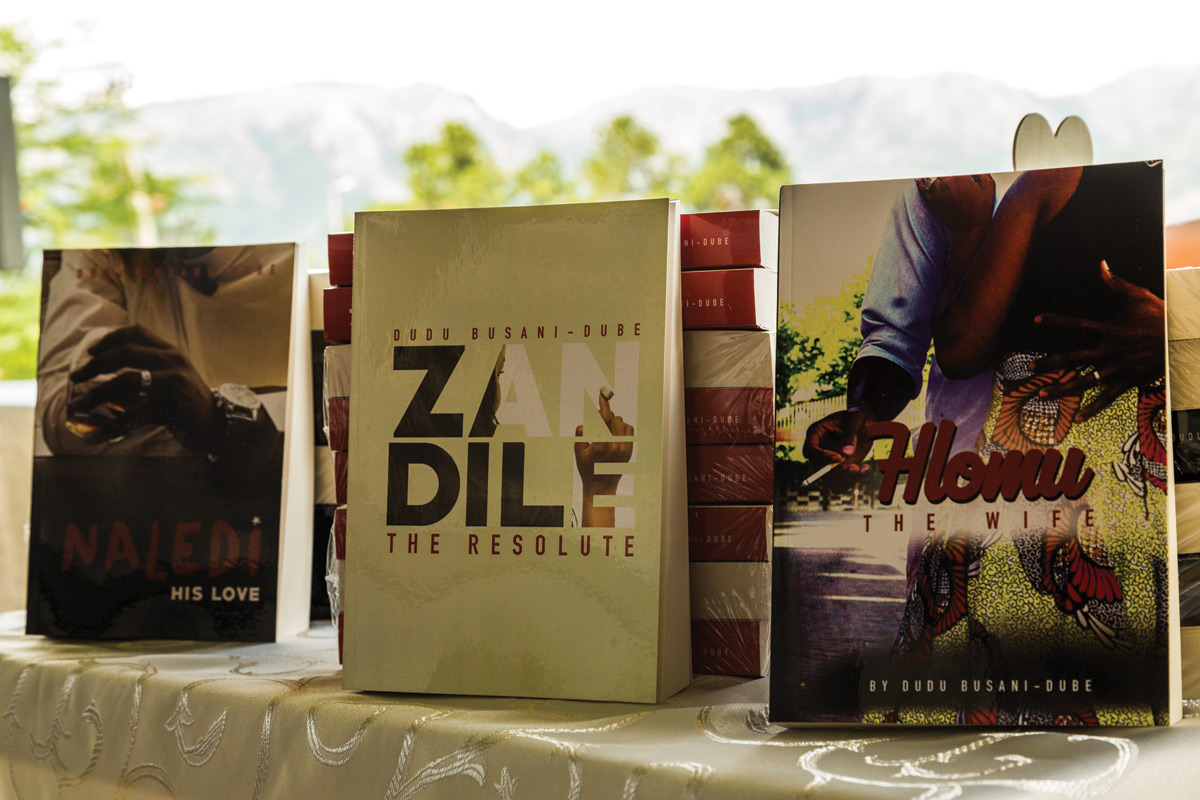
 When I released my first book two years ago, I was not prepared. I was not prepared for the success, the hype, the work and the out-of-town trips that came with it. I call them "trips" because we South Africans, we don’t tour or travel; we literally drive from one province to another, looking at nothing but the road ahead of us - and speed cameras. I moved to Johannesburg 12 years ago and in the past two years my most frequent trips have been to KwaZulu- Natal, whether it is to my home town in Durban or planned business trips to small towns within the province. This means I’m on the N3 highway at least two weekends a month, sometimes three, but I will swallow my pride and confess that until recently, I had no clue that just off the Van Reenen Pass, a stone’s throw away from the N3 highway, there is a place called The Little Church and Tea Garden. Apparently, "little" isn’t just there to make the place sound cute. The church is literally little. It can fit only eight people. And only one person can walk through the door at a time. Initially, the church was a monument built by a father to honour his dead son. However, there is no exact information about when the church was built. It was bought in 1960 by a man who later gave it to his new bride as a wedding present. Nowadays, people go there for intimate weddings. Now, back to why I didn’t know about it, despite my many trips past the building. I didn’t know about this little church because I only ever stop at Montrose. Why? Because that’s what we do when we drive on the N3; we stop at Montrose. Because it’s the law; because it is culture. It might as well be in the bible too. Well other people, the same people who call a lift an "elevator", call the place "Swinburne", which is its real name, but the rest of us call it Montrose (I don’t know why). The stop in Montrose is to use the restroom, grab a snack, fill up the petrol tank and immediately get back on the road. Nobody wants to spend more time than they should in Montrose, because every bus going to either Durban or Cape Town stops there. This means 70 people could be jumping off the bus to use the same rest room, eat from the same KFC and buy from the same convenience shop. In Montrose, you will queue. But in Montrose you find relief, because it is exactly halfway between Durban and Johannesburg. I’ve seen it happen. I’ve done it and while at it, I’ve missed out on an opportunity to admire how beautiful South African open spaces are. An opportunity to view what to me has always been "the middle of nowhere" as the parts we haven’t polluted or mined. This is why recently, when my three books took me on a trip to Swaziland, I decided I was going to look out for more than just speed cameras and a filling station. Although I have travelled outside the country before, this was the first time I had actually used the road. My contact in Swaziland, who literally lives between the two countries, told me about a million times to "not miss the Carolina sign". "If you miss it, you will end up in Nelspruit. Do not miss it," he said. This was communicated to me through all the channels available in 2017. So, I got through the N1 North Friday-peak-hour traffic just on time, when the N4 had cleared. One of the things you might not know is that there is a large number of people who travel between Pretoria and Witbank, to and from work every day - simply because driving on the N4 between these two cities is a jol. See, that one-hour strip between the two cities can get you arrested. It’s so open, so clear, so pot-holefree that once you step on that accelerator, the road just calls you to step harder. Don’t. But hell, it’s tempting. There’s also Alzu, it’s a petroport, but it’s also a zoo. That’s right. There are wild animals roaming around. Luckily not lions, but there are buffalo and impala aplenty. Pretty much half of the road users on the N4 stop at Alzu, especially those travelling with children, for a good rest. The last time I took the N4, which was recently, I ended up at Oshoek Border Gate. Now that was a joyride.
When I released my first book two years ago, I was not prepared. I was not prepared for the success, the hype, the work and the out-of-town trips that came with it. I call them "trips" because we South Africans, we don’t tour or travel; we literally drive from one province to another, looking at nothing but the road ahead of us - and speed cameras. I moved to Johannesburg 12 years ago and in the past two years my most frequent trips have been to KwaZulu- Natal, whether it is to my home town in Durban or planned business trips to small towns within the province. This means I’m on the N3 highway at least two weekends a month, sometimes three, but I will swallow my pride and confess that until recently, I had no clue that just off the Van Reenen Pass, a stone’s throw away from the N3 highway, there is a place called The Little Church and Tea Garden. Apparently, "little" isn’t just there to make the place sound cute. The church is literally little. It can fit only eight people. And only one person can walk through the door at a time. Initially, the church was a monument built by a father to honour his dead son. However, there is no exact information about when the church was built. It was bought in 1960 by a man who later gave it to his new bride as a wedding present. Nowadays, people go there for intimate weddings. Now, back to why I didn’t know about it, despite my many trips past the building. I didn’t know about this little church because I only ever stop at Montrose. Why? Because that’s what we do when we drive on the N3; we stop at Montrose. Because it’s the law; because it is culture. It might as well be in the bible too. Well other people, the same people who call a lift an "elevator", call the place "Swinburne", which is its real name, but the rest of us call it Montrose (I don’t know why). The stop in Montrose is to use the restroom, grab a snack, fill up the petrol tank and immediately get back on the road. Nobody wants to spend more time than they should in Montrose, because every bus going to either Durban or Cape Town stops there. This means 70 people could be jumping off the bus to use the same rest room, eat from the same KFC and buy from the same convenience shop. In Montrose, you will queue. But in Montrose you find relief, because it is exactly halfway between Durban and Johannesburg. I’ve seen it happen. I’ve done it and while at it, I’ve missed out on an opportunity to admire how beautiful South African open spaces are. An opportunity to view what to me has always been "the middle of nowhere" as the parts we haven’t polluted or mined. This is why recently, when my three books took me on a trip to Swaziland, I decided I was going to look out for more than just speed cameras and a filling station. Although I have travelled outside the country before, this was the first time I had actually used the road. My contact in Swaziland, who literally lives between the two countries, told me about a million times to "not miss the Carolina sign". "If you miss it, you will end up in Nelspruit. Do not miss it," he said. This was communicated to me through all the channels available in 2017. So, I got through the N1 North Friday-peak-hour traffic just on time, when the N4 had cleared. One of the things you might not know is that there is a large number of people who travel between Pretoria and Witbank, to and from work every day - simply because driving on the N4 between these two cities is a jol. See, that one-hour strip between the two cities can get you arrested. It’s so open, so clear, so pot-holefree that once you step on that accelerator, the road just calls you to step harder. Don’t. But hell, it’s tempting. There’s also Alzu, it’s a petroport, but it’s also a zoo. That’s right. There are wild animals roaming around. Luckily not lions, but there are buffalo and impala aplenty. Pretty much half of the road users on the N4 stop at Alzu, especially those travelling with children, for a good rest. The last time I took the N4, which was recently, I ended up at Oshoek Border Gate. Now that was a joyride.

